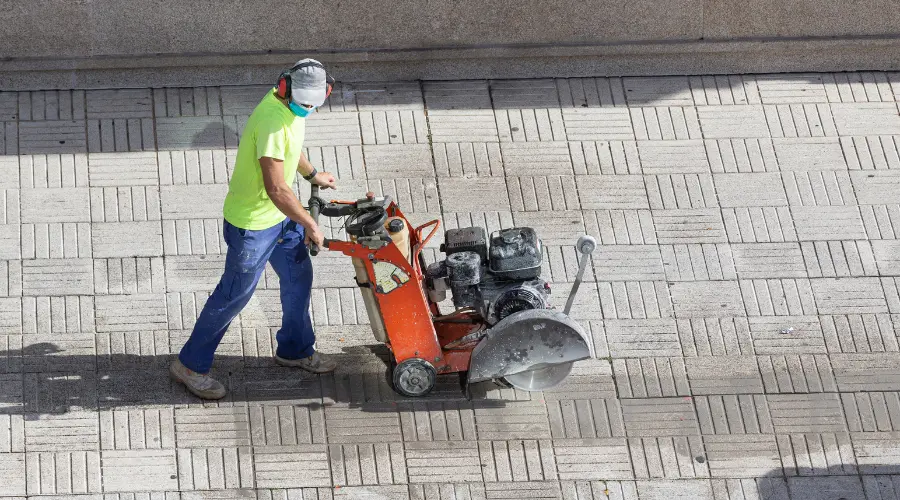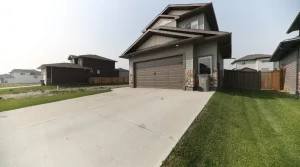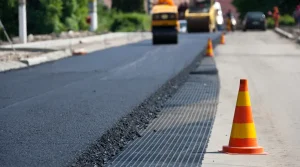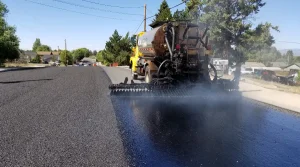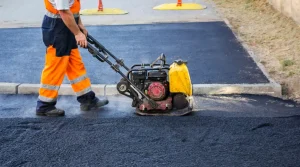Are you watching your parking lot or driveway slowly deteriorate while your maintenance budget drains away with each passing season? You’re not alone. Property managers across the country face the same challenge: how to extend pavement life without breaking the bank.
Did you know? Regular pavement maintenance services can extend your asphalt’s lifespan from 8 years to 25+ years, saving you up to 500% in long-term costs.
In this comprehensive guide, we’ll explore how professional pavement maintenance services provide the expertise, equipment, and preventative care necessary to protect your valuable asphalt investment. From crack sealing to complete resurfacing, learn why timely intervention matters and how to develop a maintenance plan that works for your specific needs.
Understanding Pavement Deterioration
Your asphalt pavement is constantly under attack. Understanding these threats is the first step in developing an effective maintenance strategy.
Primary Causes of Asphalt Damage:
✓ Water infiltration – The #1 enemy of asphalt integrity ✓ UV radiation – Oxidizes binders, causing brittleness and color fading ✓ Heavy traffic loads – Creates pressure points leading to cracks and depressions ✓ Oil and chemical spills – Dissolves binding agents in the pavement ✓ Freeze-thaw cycles – Expands and contracts pavement, creating structural weakness ✓ Poor initial installation – Insufficient base preparation or improper materials
Without intervention, these forces create a predictable deterioration pattern:
- Surface oxidation and minor cracking
- Water penetration through cracks
- Base material compromise
- Pavement deformation (rutting, potholes)
- Structural failure requiring complete replacement
The key insight: Most property owners wait until stage 4 to act, when preventative maintenance at stages 1-2 costs just 20% of full replacement.
Core Pavement Maintenance Services
Professional pavement maintenance services offer a spectrum of solutions addressing various stages of deterioration:
Preventative Maintenance Services:
- Sealcoating
- Creates a protective waterproof barrier
- Blocks UV radiation damage
- Restores rich black appearance
- Recommended every 2-3 years
- Average cost: $0.15-$0.25 per square foot
- Crack Sealing
- Prevents water penetration
- Stops cracks from expanding
- Uses hot-applied rubberized materials
- Ideal for cracks 1/4″ to 1″ wide
- Average cost: $0.50-$1.25 per linear foot
- Pavement Marking and Striping
- Enhances safety and traffic flow
- Ensures ADA compliance
- Maximizes parking capacity
- Uses durable traffic paint or thermoplastic
- Average cost: $0.15-$0.30 per linear foot
Corrective Maintenance Services:
- Pothole and Depression Repair
- Addresses localized structural failures
- Removes compromised material
- Rebuilds with fresh hot mix asphalt
- Average cost: $3-$10 per square foot
- Asphalt Patching
- Targets larger damaged areas
- Provides seamless integration with existing pavement
- Prevents spread of deterioration
- Average cost: $2-$6 per square foot
- Infrared Asphalt Repair
- Heats existing asphalt for seamless bonding
- Creates stronger repairs than cold patch
- Works well in cooler temperatures
- Average cost: $4-$8 per square foot
Rehabilitation Services:
- Asphalt Milling and Overlay
- Removes damaged top layer
- Applies new asphalt surface
- Extends pavement life 8-15 years
- Costs 40-60% less than full replacement
- Average cost: $1.50-$2.50 per square foot
- Full-Depth Reclamation
- Pulverizes existing pavement
- Mixes with underlying materials
- Creates new stabilized base
- Environmentally friendly alternative to replacement
- Average cost: $2-$5 per square foot
Benefits of Regular Professional Maintenance
Property managers who implement consistent pavement maintenance services experience significant advantages:
Financial Benefits:
- Extended pavement lifespan by 300% (from 8 years to 25+ years)
- Reduced lifecycle costs by up to 80%
- Decreased liability exposure from trip-and-fall incidents
- Enhanced property value (well-maintained pavement improves appraisals)
- Protected subgrade investment (the most expensive component to replace)
Operational Benefits:
- Minimized business disruption (maintenance vs. reconstruction)
- Improved drainage preventing water damage to buildings
- Enhanced safety for vehicles and pedestrians
- Better aesthetics creating positive first impressions
- Simplified snow removal on well-maintained surfaces
Creating Your Pavement Maintenance Calendar
Successful pavement maintenance requires strategic timing. Here’s a recommended schedule for comprehensive care:
Spring (March-May):
- Comprehensive inspection after winter damage
- Pothole and depression repairs
- Crack sealing to prevent water infiltration
- Sweeping to remove winter debris and chemicals
Summer (June-August):
- Sealcoating (requires 50°F+ temperatures)
- Major rehabilitation projects
- Parking lot striping and marking
- Infrared repairs for surface defects
Fall (September-November):
- Final crack sealing before winter
- Drainage system cleaning
- Preventative treatments for freeze protection
- Assess needs for next year’s budget planning
Winter (December-February):
- Snow and ice management
- Documentation of problem areas
- Temporary cold patch repairs as needed
- RFP development for spring projects
Pro tip: Document your pavement’s condition with photos each season. This visual record helps track deterioration rates and justify maintenance investments.
Choosing the Right Pavement Maintenance Partner
Not all pavement maintenance services deliver equal results. When selecting a provider, verify they offer:
✓ Proper equipment – Look for modern sealcoating rigs, hot crack sealing equipment, and infrared repair technology ✓ Quality materials – Ask about asphalt cement grades, sealcoat additives, and crack sealant specifications ✓ Trained crews – Verify certification by organizations like PCTC (Pavement Coatings Technology Council) ✓ Detailed assessment – Expect comprehensive evaluation before receiving recommendations ✓ Transparent pricing – Request itemized quotes with material specifications ✓ Written warranty – Minimum 1-year guarantee on workmanship ✓ Insurance coverage – Confirm adequate liability and workers’ compensation policies
Red flags to avoid:
- Door-to-door solicitors offering “leftover materials” deals
- Quotes significantly below market average (often indicate diluted sealcoat)
- Contractors unwilling to provide references or show previous work
- Pressure tactics rushing your decision-making process
Cost Comparison: Maintenance vs. Replacement
Consider this 15-year cost analysis for a 40,000 sq. ft. commercial parking lot:
Scenario A: Reactive Approach (No Maintenance Plan)
- Years 1-7: No maintenance ($0)
- Year 8: Complete replacement ($120,000)
- Years 9-14: No maintenance ($0)
- Year 15: Complete replacement ($150,000)
- 15-Year Total: $270,000
Scenario B: Proactive Maintenance Program
- Years 1, 4, 7, 10, 13: Sealcoating ($6,000 each = $30,000)
- Years 2, 5, 8, 11, 14: Crack sealing ($3,000 each = $15,000)
- Year 9: Partial overlay of high-traffic areas ($40,000)
- 15-Year Total: $85,000
Result: The proactive maintenance approach saves $185,000 (68%) while providing a consistently better-looking and safer pavement surface.
Environmental Benefits of Proper Maintenance
Beyond financial advantages, professional pavement maintenance services deliver significant environmental benefits:
- Reduced raw material consumption – Every ton of asphalt maintained saves the extraction of equivalent new materials
- Lower energy usage – Maintenance requires 70% less energy than reconstruction
- Decreased landfill impact – Extending pavement life prevents tons of demolition waste
- Reduced stormwater pollution – Well-maintained pavements leach fewer contaminants
- Minimized heat island effect – Fresh sealcoat with proper additives reflects more sunlight
Did you know? A single mile of pavement rehabilitation saves approximately 1,600 tons of construction materials compared to reconstruction.
Take Action: Protect Your Pavement Investment Today
Don’t wait until small issues become expensive emergencies. The most cost-effective time to begin pavement maintenance is now—before visible signs of failure appear.
Your Next Steps:
- Schedule a professional pavement assessment
- Request a customized maintenance plan
- Implement preventative treatments immediately
- Document your pavement’s condition regularly
- Budget for ongoing maintenance, not emergency repairs
Request Your Free Pavement Evaluation
Our team of certified pavement maintenance specialists is ready to help you develop a customized maintenance plan that maximizes your pavement’s lifespan while minimizing costs.
Contact us today at 201-514-606 or visit www.pavinghackensack.com to schedule your complimentary pavement assessment.

